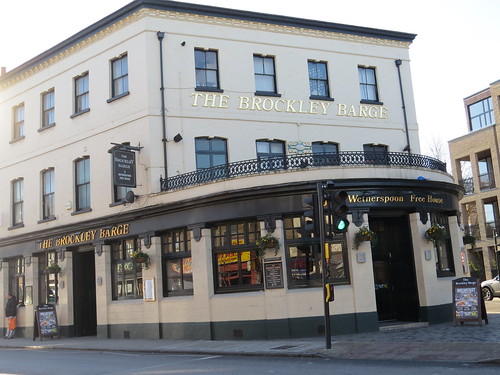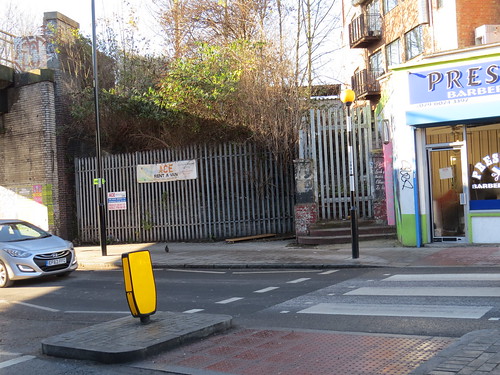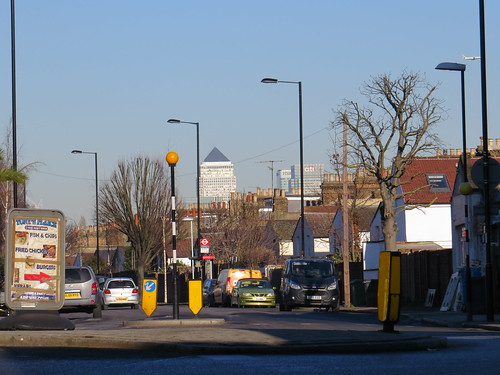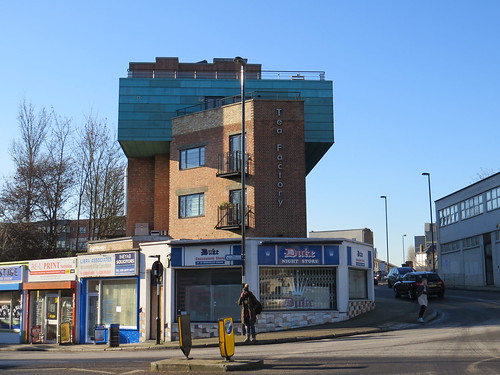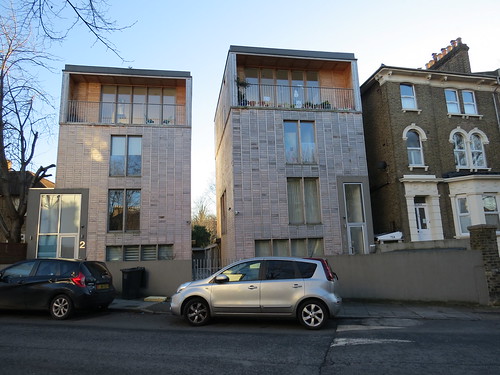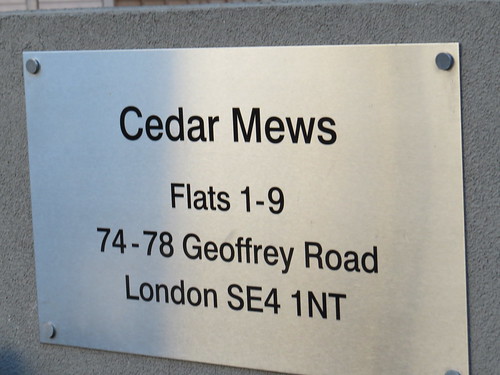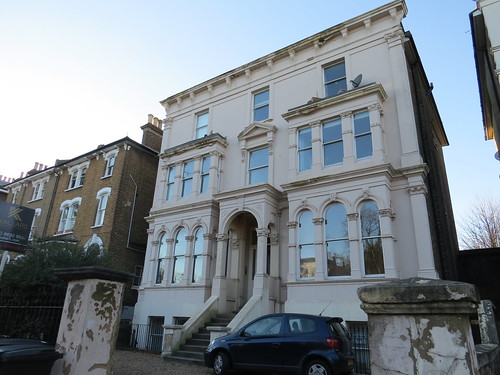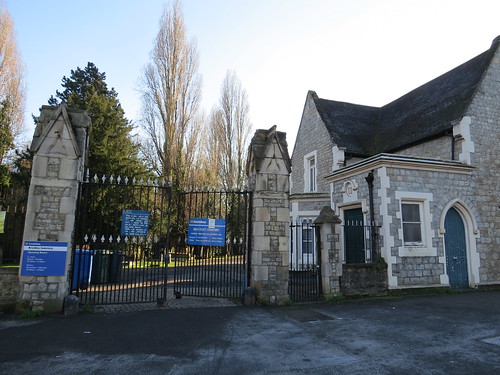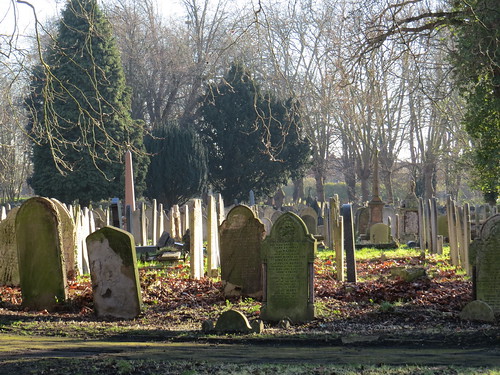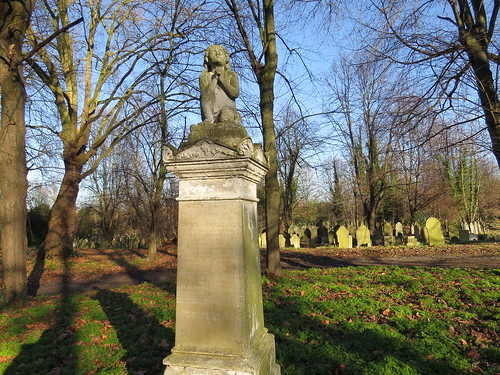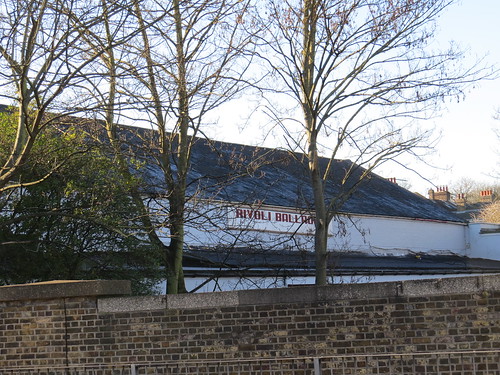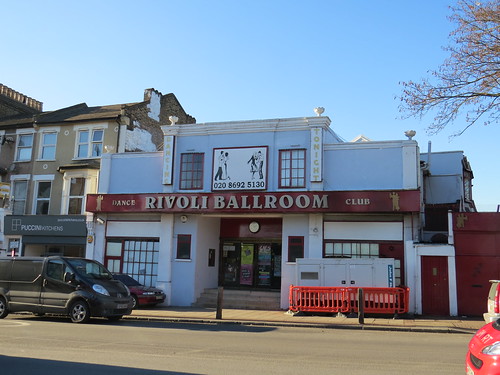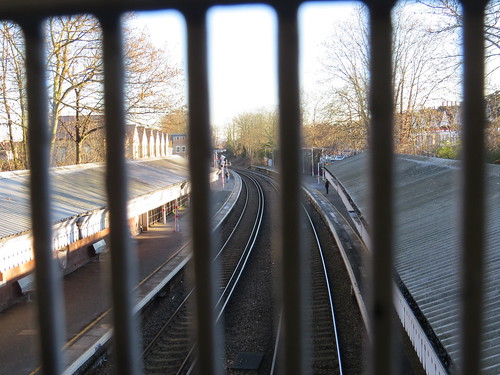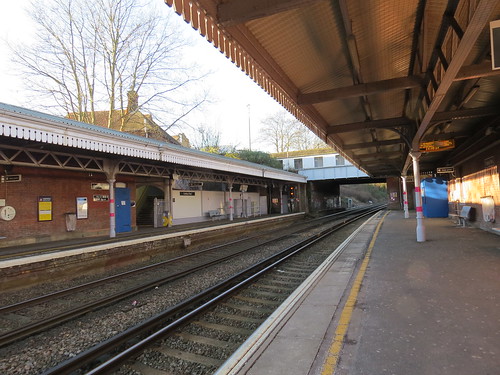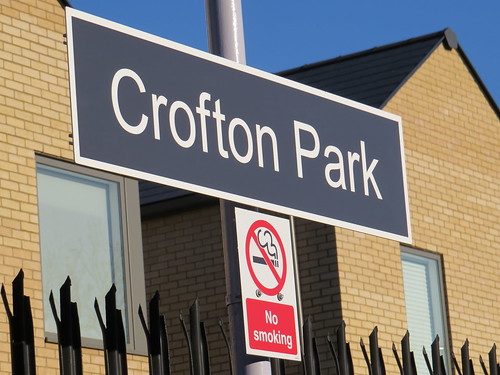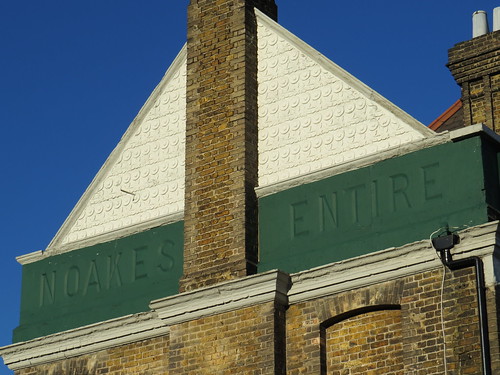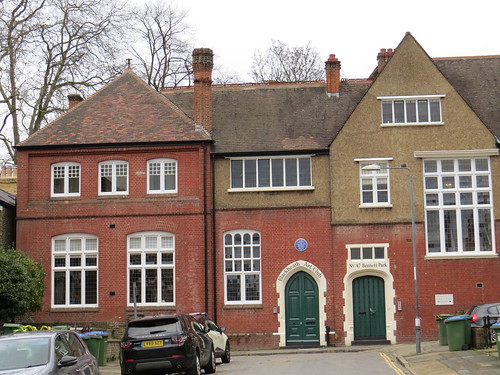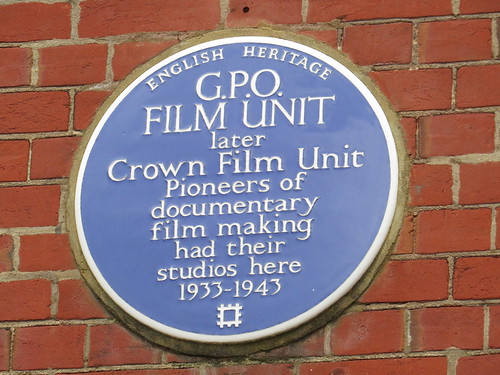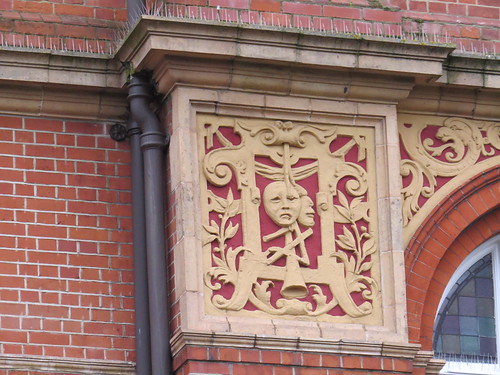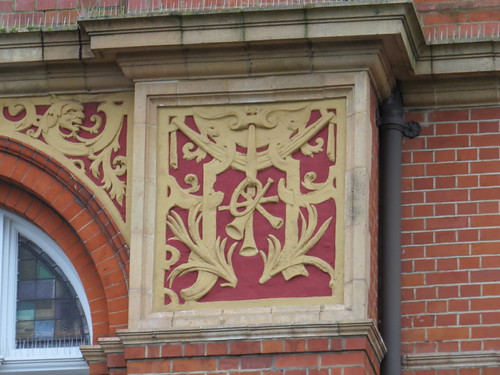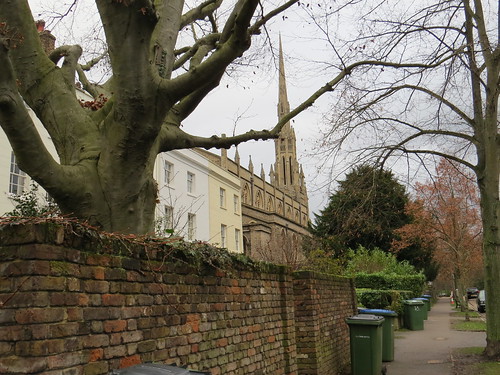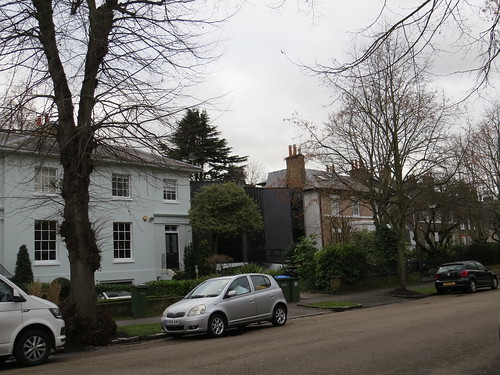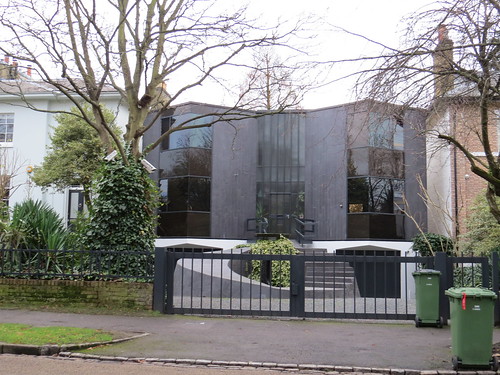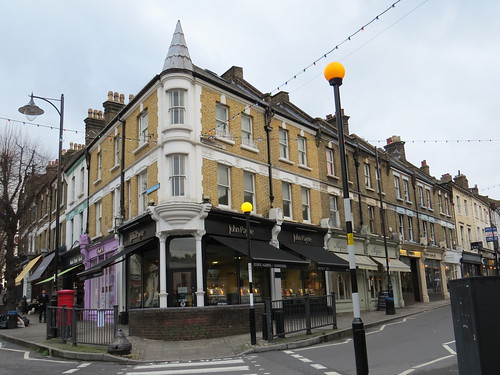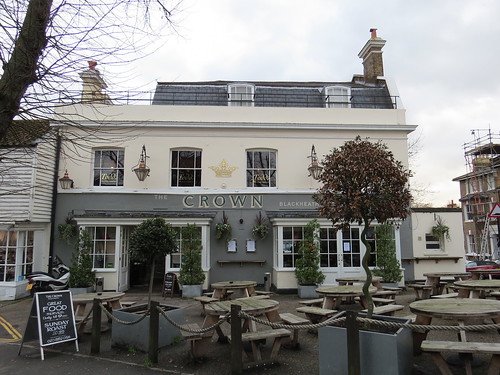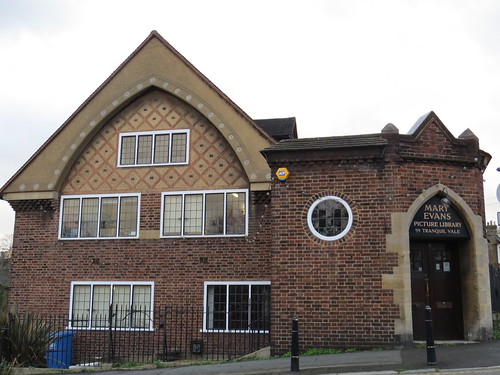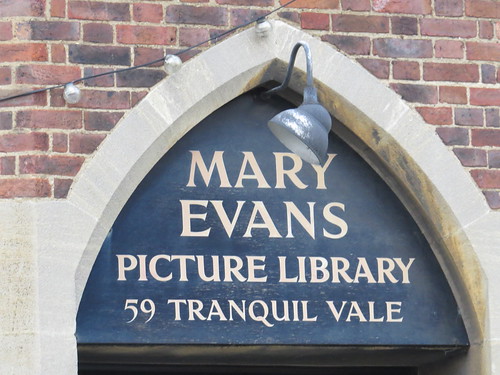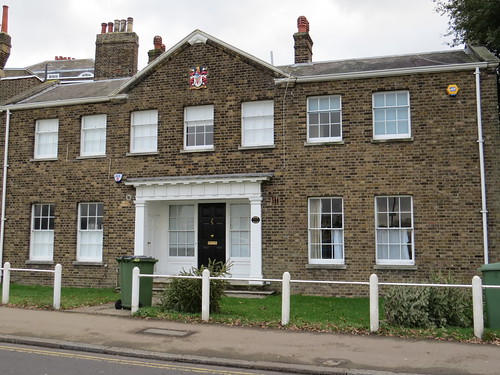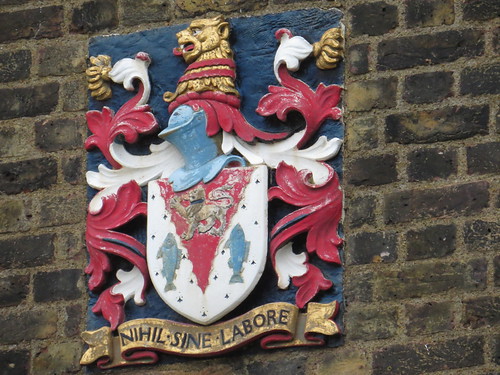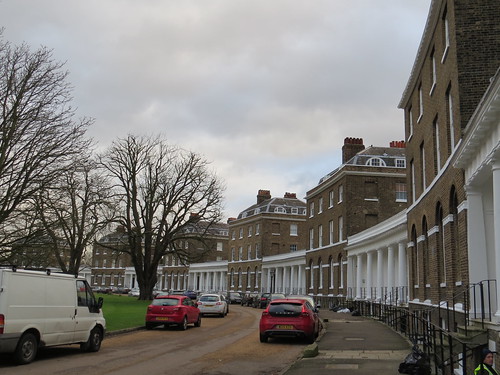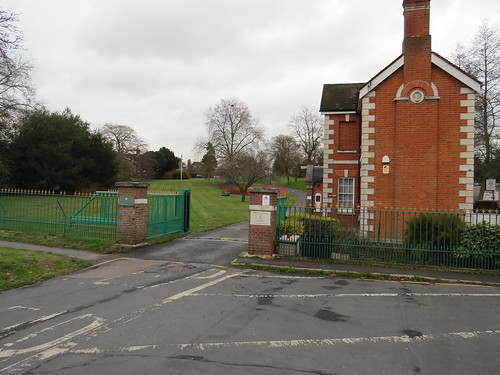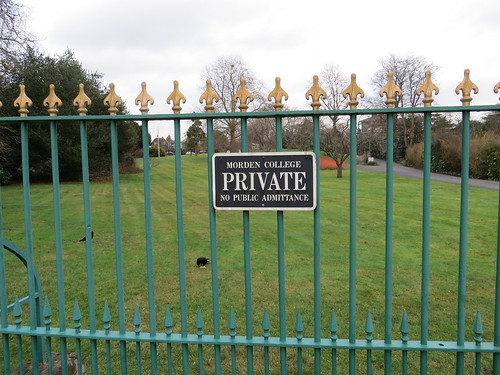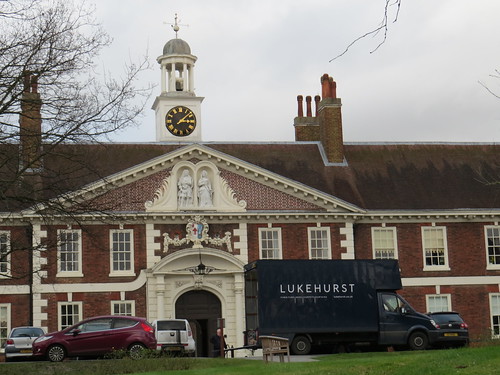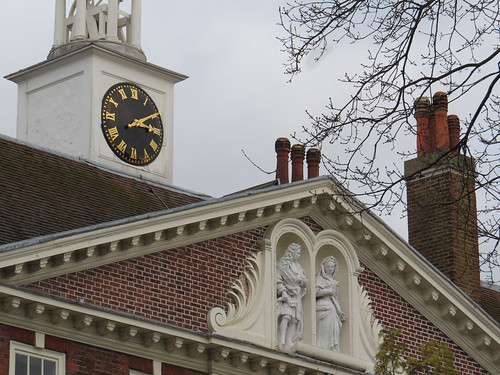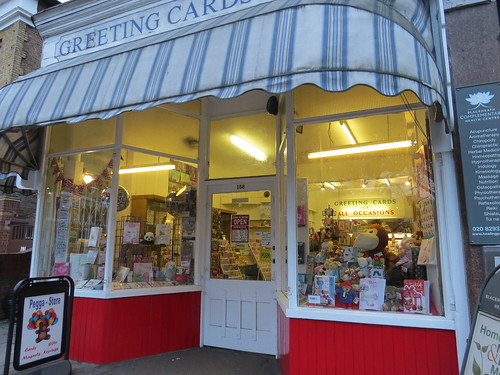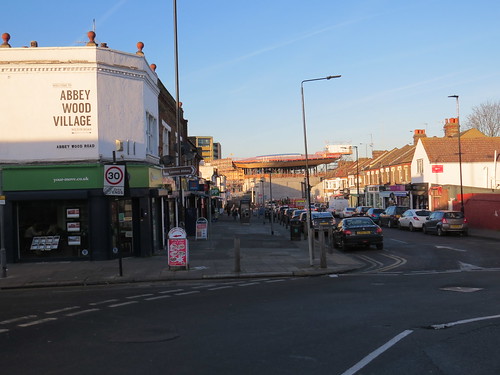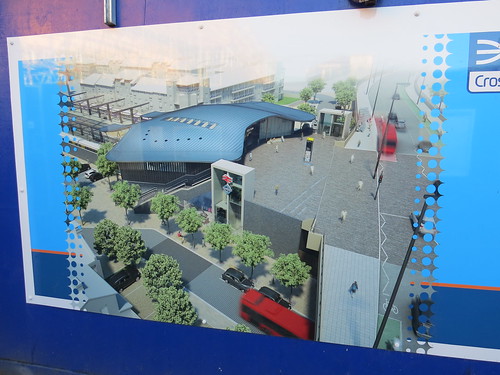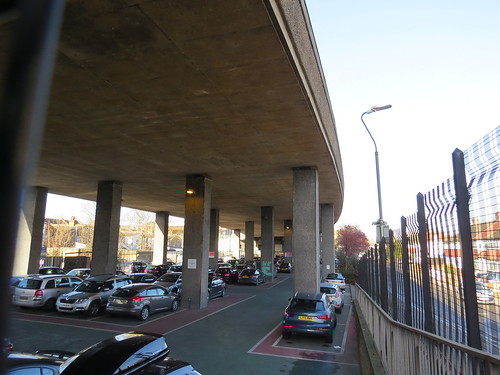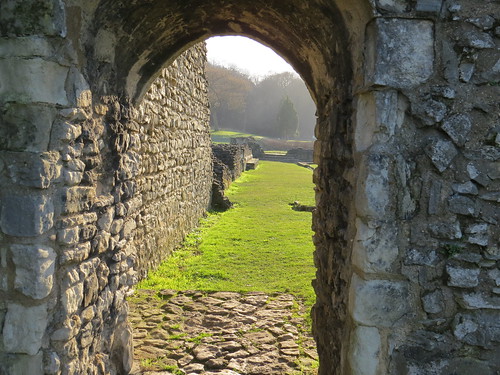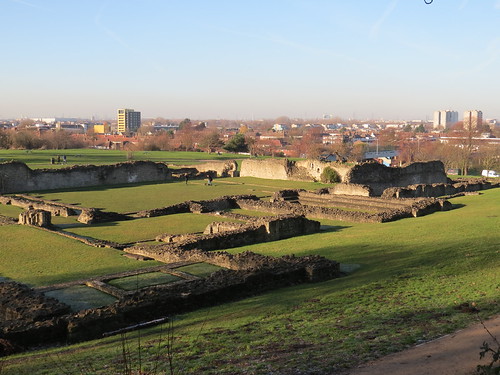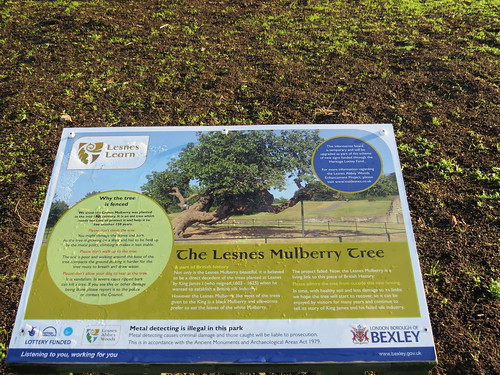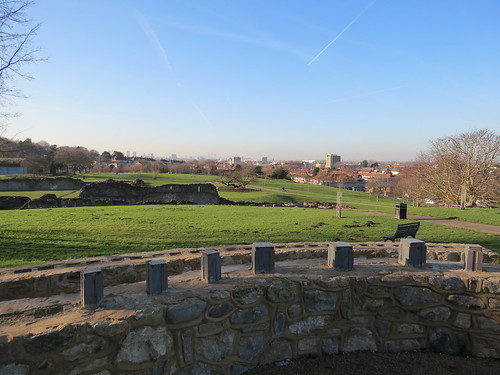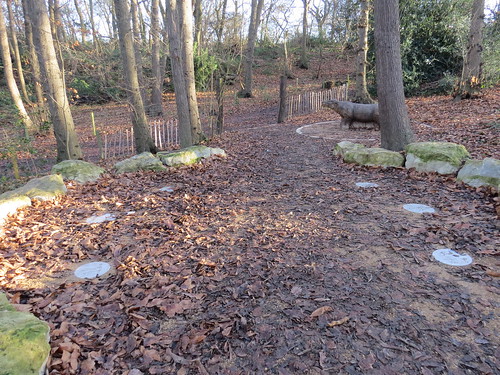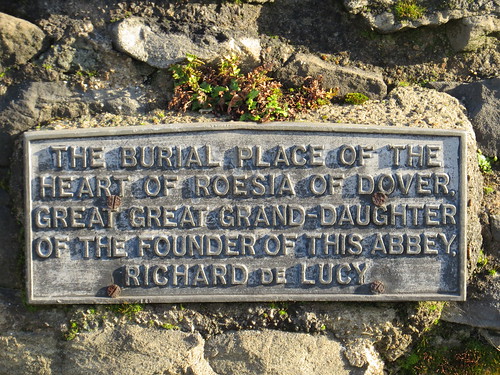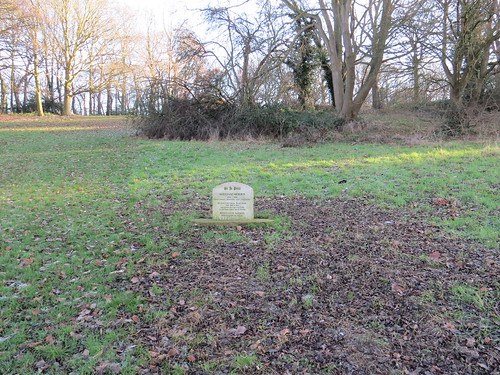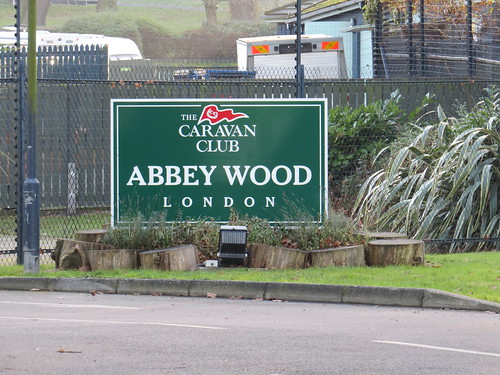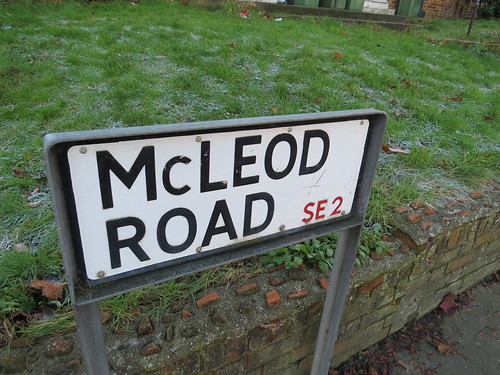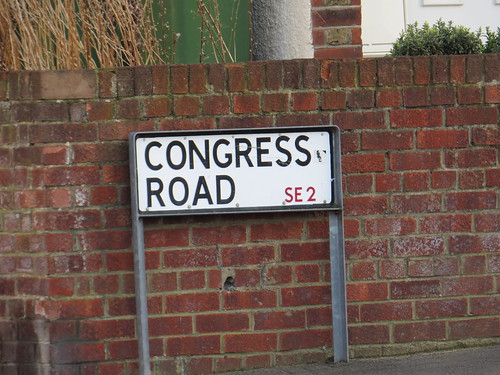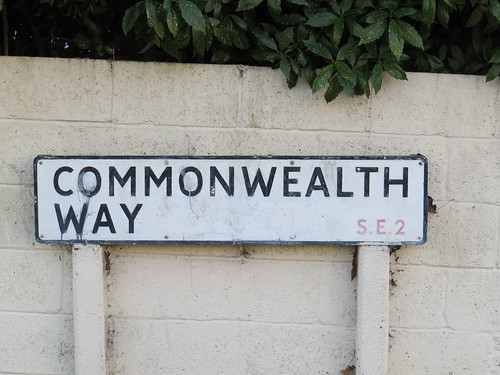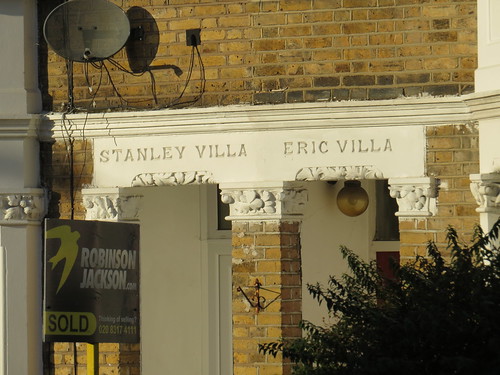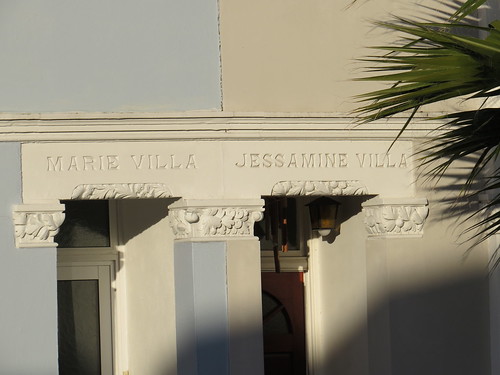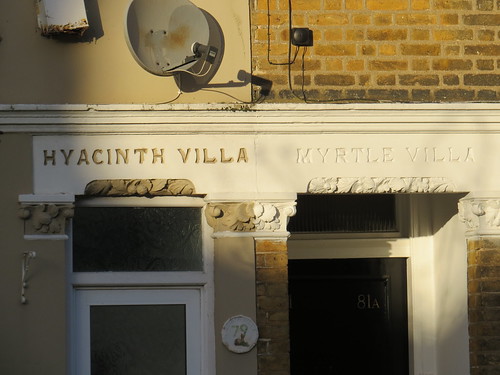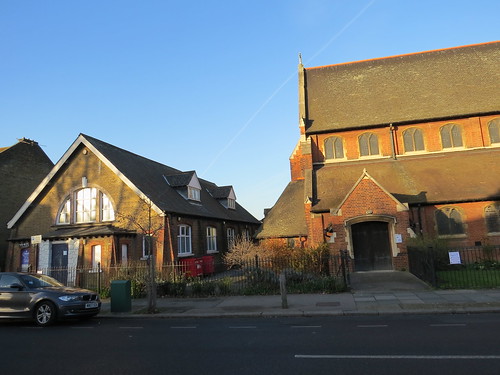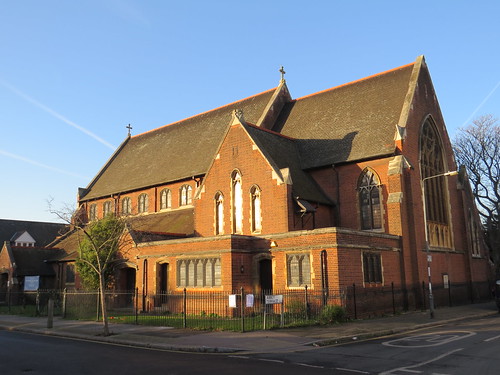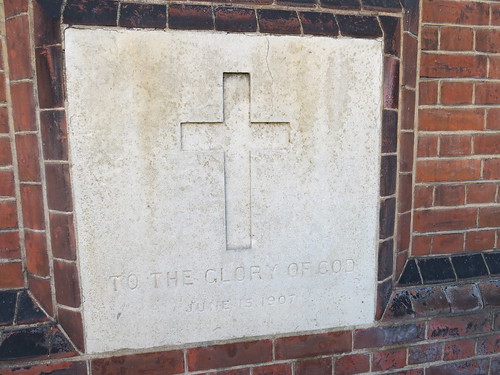SE4 is Brockley which is one of those places one tends to pass by on a train – it being on the main line out of London Bridge towards Croydon and Brighton. But now I have the chance actually to walk round here.
We start our walk at Brockley Post Office which is at 185 Brockley Road, SE4. Our first stop is just across the road and is a pub called the Brockley Barge..
Stop 1: Brockley Barge
This seems to suggest there might be a canal here but there is not. At least not today. The name of this pub recalls the barges which plied their trade on the Croydon Canal. This canal opened in 1809 and ran from Croydon to New Cross where it joined the Great Surrey Canal to access the Thames.
It was not a financial success and it closed in 1836 – the first canal to be closed by Act of Parliament. The canal bought by a railway company, the London and Croydon Railway who used much of the route for their new railway from London Bridge to West Croydon, the latter station being built on the filled in basin at the southern end of the canal.
This pub was built in 1868 and was originally called the Breakspear Arms. It was rechristened the Brockley Barge in 2000 when it became a Wetherspoons.
Our next stop is a little way along Brockley Road as if you had turned right our of the Post Office.
Stop 2: Brockley Station
The London and Croydon Railway opened through here in 1839, but Brockley did not get a station until March 1871, though there is precious little there today to suggest it was a Victorian station. The buildings are modern, but there is an old footbridge.
There are four tracks here (two slow and two fast lines, with the fast ones together in the middle) but like all the stations between New Cross and Norwood Junction, Brockley only has platforms are the slow lines.
Today this station has 12 trains an hour. Four are Southern trains which go from London Bridge and end up at either Caterham or loop back to Victoria. The other 8 trains are the newish London Overground service extending the old East London line from New Cross Gate to either West Croydon or Crystal Palace. Must be slightly frustrating to be here if you want to get to central London when two thirds of your trains go on an arc around the centre. But at least they connect in with the tube quite well.
An interesting point to note about this station is that there is another railway line which passes over the end on the platforms.
This was opened in June 1872 by the London, Chatham and Dover Railway on its Greenwich Park Branch Line and there was once a station here on this line, as we shall hear shortly.
Exit the station the way you came in and turn left and head back to the main road. Go under the railway bridge. Ahead is a junction which goes by the name of Brockley Cross.
Stop 3: Brockley Cross
Before venturing to the mini roundabout that is now Brockley Cross. Just look to your left as you pass under the railway bridge. This is what is left of the entrance to Brockley Lane station.
Brockley Lane is on that line that crosses over Brockley station. Brockley Lane station opened in 1872 but closed to passengers in January 1917 though it continued as a goods station until May 1970. There was a building at road level which was used as a shop until a fire in 2004. There is lots more info about this dead station at the wonderful Disused Stations site: http://www.disused-stations.org.uk/b/brockley_lane/
And according to the Disused Stations site, just across the road is the old station master’s house. Here it is today.
I guess it would be too expensive to reopen the station and create an interchange at Brockley so you could travel from say Croydon or Norwood Junction to Lewisham or perhaps Blackheath without having to go up to London Bridge. This kind of orbital journey does happen and such an interchange might help reduce congestion in central London. Maybe one day.
Now look ahead beyond the mini roundabout along Malpas Road and you get a view of some of the towers at Canary Wharf.
Stop 4 The Tea Factory
Turn back look along Endwell Road from Brockley Cross and you see this strange sight looming up. It says on the side “Tea Factory”
If you go along Endwell Road, you can see it full on.
This was apparently constructed in the late 1940’s by the London Tea and Coffee Company whose original warehouse was destroyed in the Second World War. It is rather nicely done but it is in a strange location which must have delightful views of the two railway lines that cross near here.
Now head away from Brockley Cross along Godfrey Road. Our next stop is a little way along this street.
Stop 5: Cedar Mews, 74 – 78 Godfrey Road
My eye was taken by this rather handsome newish development on the right, called Cedar Mews.
These apartment buildings have been fitted in and are the same scale as the 19th century houses nearby and yet they are completely different.
The buildings were completed in 2013 and are by West London based Groves Natcheva architects, who I have never heard of. They may not be to everyone’s taste but at least someone thought to make the effort.
Keep walking along Godfrey Road to the end where you will reach Wickham Road. Just take a short detour to your left along Wickham Road to see Number 42.
Stop 6: Number 42 Wickham Road
Unlikely as it may seem Lily Langtry, actress and mistress of the Prince of Wales, who is believed to have lived at 42 Wickham Road – at least according to Lewisham Council.
This is referred to in a council planning document about Brockley Conservation area: https://www.lewisham.gov.uk/myservices/planning/conservation/conservation-areas/Documents/BrockleyConservationAreaCharacterAppraisalPart1.pdf
Now head back along Wickham Road right to the end and you will be back at Brockley Road where you turn left. Our next stop is a little way along on the left.
Stop 7: Brockley Cemetery
This entrance is to Brockley cemetery, although when it opened in 1858 it was called Deptford Cemetery.
There is a helpful map on the right as you go in.
It is a quiet well kept cemetery – not at all overwhelmed by vegetation.
There are a couple of war memorials – both of which are of rather strange design.
First you will come across the Deptford War memorial.
This has a column and then a big space with a back wall. in the space are a series of small marker stones with numbers – presumably they have some significance such as they are for the location of wreaths at the annual Remembrance Day ceremony.
Further on there is another war memorial, again an odd design which does not encourage you to approach closely.
One curiosity about this cemetery is that it was actually two cemeteries and there was a wall between them until 1948. Just around here I think.
The two were opened in the same year (1858) and the other was originally called Lewisham Cemetery and is now Ladywell Cemetery.
Just near the boundary between the two cemeteries is this interesting memorial which sits on its own.
This monument tells a sad tale. Below the figure is an inscription detailing the horrific events surrounding the death of Jane Clouson on 25 April 1871.
It says: “A motherless girl who was murdered in Kidbrooke Lane, Eltham aged 17 in 1871. Her last words were, “Oh, let me die”.”
The monument was funded by public subscription following the contentious trial and acquittal of Edmund Walter Pook, a printer from Greenwich, who had been accused of her murder. More on that story can be found on Wikipedia https://en.wikipedia.org/wiki/Jane_Clouson
There is a site run by the Friends of Brockley and Ladywell Cemeteries which has some interest stuff about the cemetery. http://www.foblc.org.uk/
Retrace your steps to the main road and turn left. Our next stop is ahead on the left.
But going along you might spot some little reminders that this was once a tram route.
These are relics of the London County Council (LCC) Tramway system. We saw some in Tooting SW17 and here they are again. The key thing which made the LCC system different was that there were no overhead wires. The trams got their power though a live rail in a conduit in the street. These manhole covers would have been part of that system. Amazing they are still here given that the trams were withdrawn from this street in 1952.
Our next stop is a little way on the left.
Stop 8: Crofton Park Library
This lovely building opened in 1905 and was funded by Scottish American industrialist and philanthropist Andrew Carnegie (1835 – 1919). It is one of around 19 he supported in Greater London.
Although Crofton Park Library is part of Lewisham Library Service, for the past 5 or so years, it has been a volunteer run Community library hosted by an organisation called Eco Communities. It manages to open 5 days a week and maybe this volunteer model is the future for many libraries.
Note the crest over the door, with the motto “Salus Populi Suprema Lex”.
This translates roughly as: “The welfare of the people shall be the supreme law” and is attributed to Cicero. This was the motto of the Metropolitan Borough of Lewisham which was created in 1900 and it was taken up by its successor, the London Borough of Lewisham which was formed in 1965.
We are right by a railway bridge here and if you look over the road, you will see the side of our next stop.
Stop 9: Rivoli Ballroom
Keep going along the main road and you will see the front.
This is quite an amazing survivor.
The Rivoli started life as a cinema in July 1913 when it opened as the Picture Palace According to the wonderful Cinema Treasures site:
“It soon became known as the Crofton Park Picture Palace and by 1918 was renamed Crofton Park Cinema. In 1931 it had been renamed Rivoli Cinema and some alterations had been carried out to modernise the buildings facade in a rather plain Art Deco style, plus a cafe was added to the facilities.”
It remained an Independently operated and owned cinema throughout it life. It closed on 2nd March 1957. The building was boarded up for a couple of years and then reopened on 26th December 1959 as the Rivoli Ballroom. The interior is apparently much as it was from back then which makes it so special.
Despite threats to demolish the building in 2007, it remains open today catering to lovers of all sorts of dance and in February and April 2017, they are even having a pop up cinema over a couple of days.
Here is a link to their website for more info. https://www.rivoliballroom.com/
Our next stop is just across the road.
Stop 11: Crofton Park station
This is a strange little station which was opened by the London, Chatham and Dover railway in 1892 on what is known as the Catford Loop, which provided an alternative route for the Chatham line between Brixton and Shortlands. It also has a connection to the route into Blackfriars near Loughborough Junction which is where the trains go today
But it is a rather poor train service. Only two trains an hour. they are Thameslink trains on the West Hampstead to Sevenoaks route. Unsurprisingly this station had only around 0.75m passengers in 2015/16 compared with over 4m at Brockley.
Now if you have gone in the station, then come out and turn left and head along the main road. Our final stop is ahead on your right.
Stop 12: Brockley Jack
There has been a hostelry here for some time. For much of the 18th century it was known as “The Crooked Billet”, for much of the 19th century “The Castle”
The London Encyclopaedia says “Brockley remained agricultural until the 19th century, the only building of note being the Brockley Jack formerly a curious, rambling hostelry, reputedly the haunt of highwaymen”.
The pub was rebuilt in 1898 by the brewers Noakes. There are a couple of reminders of Noakes. High up on the left hand side you can see the words “Noakes Entire”.
“Entire” originally meant a blend of three separate beers, consisting of one third each beer, ale, and strong beer. Initially it was mixed in the bar just before service but later it was mixed at the brewery and shipped out ready to be served..
And by the front door there is a foundation laid by Wickham Noakes.
Noakes by the way was a local Brewery based in White Grounds, SE1 (which is just off Crucifix Lane close to London Bridge station). Noakes was taken over by Courage in 1930.
When the pub was rebuilt in 1898, it had a function room at the rear. This has been used for various things, such as a dance hall, a snooker room and a music venue. But since the early 90s, it has been used for theatrical performances. It now goes by the name of “The Jack Studio”.
The theatre website says: “In 2017 the Jack Studio the marks twenty three years of creating theatre. It is a vibrant and intimate performance space in south east London, with a long history both within its community and the London-wide theatre scene. We are committed to producing theatre that inspires, challenges and entertains our audience. The theatre is keen to continue its tradition of supporting new companies, providing a space for them to develop their work, alongside the productions created each year by the Jack’s in-house team.”
More info about the theatre and what’s on there at: http://www.brockleyjack.co.uk/
Well we have reached the end of our SE4 tour. Some interesting things along the way in the form of a couple of pubs, a couple of stations, a library and a dance hall.
I should just mention that there is a blue plaque in SE4 for the reporter and crime writer Edgar Wallace who lived at 6 Tressillian Crescent, SE4, but it was just a little too far off the route to include, but you could see it between stops 6 & 7. As you are heading along Wickham road, take a left along Harefield Road and keep going to the end
We are close by Crofton Park station with its pathetic train service, so you might want to jump on a bus back to Brockley or else go on to Forest Hill both of which have much better services.


